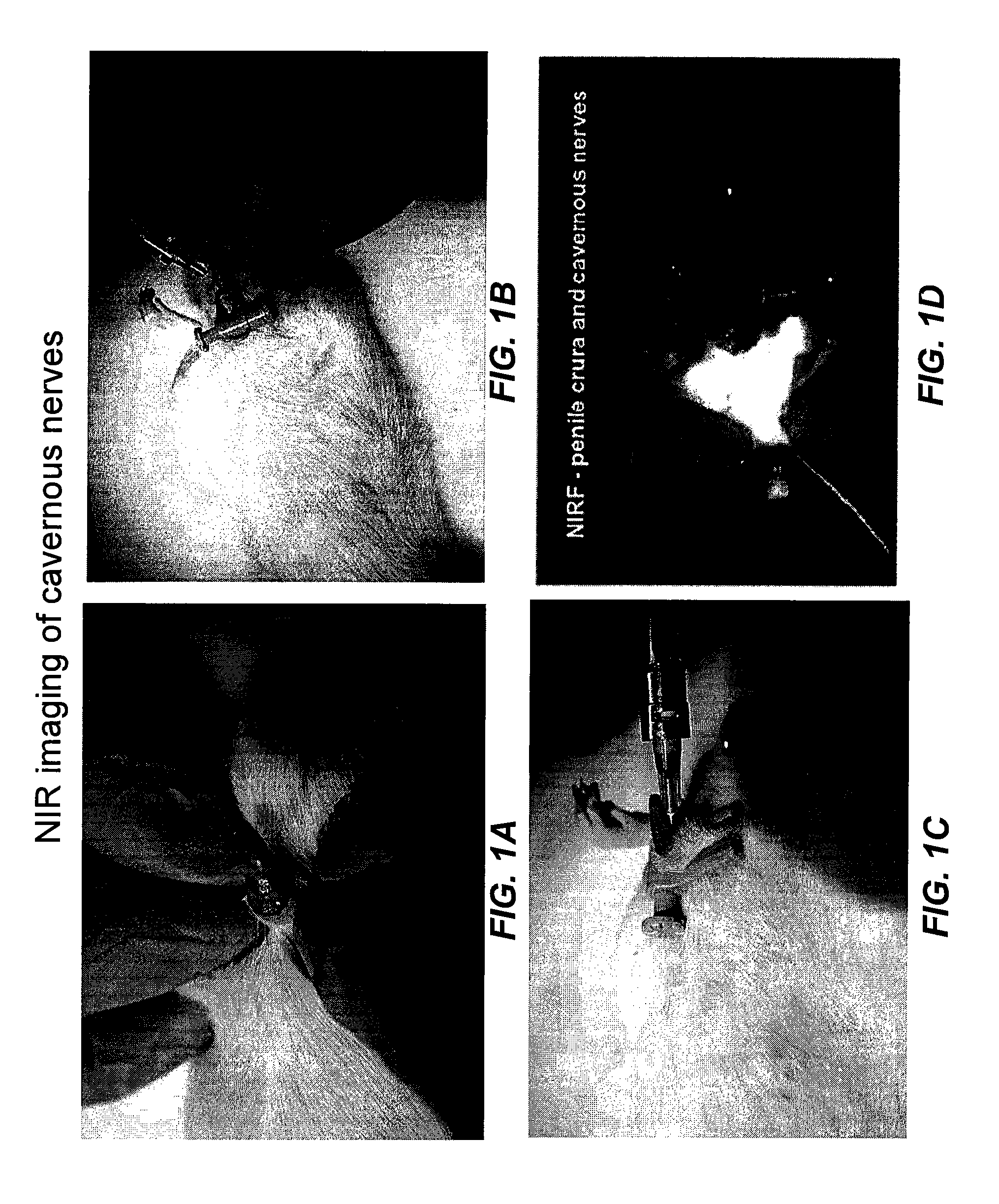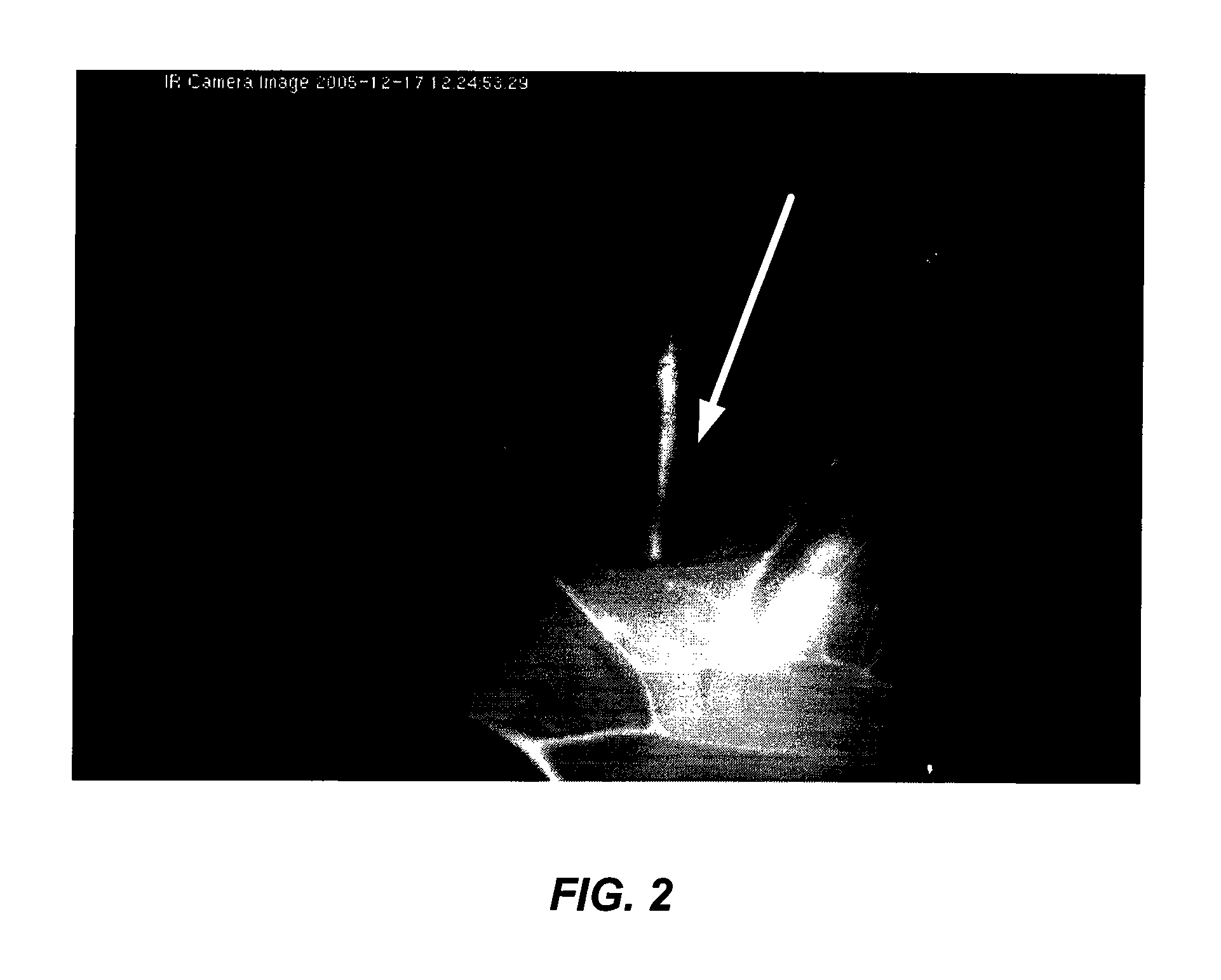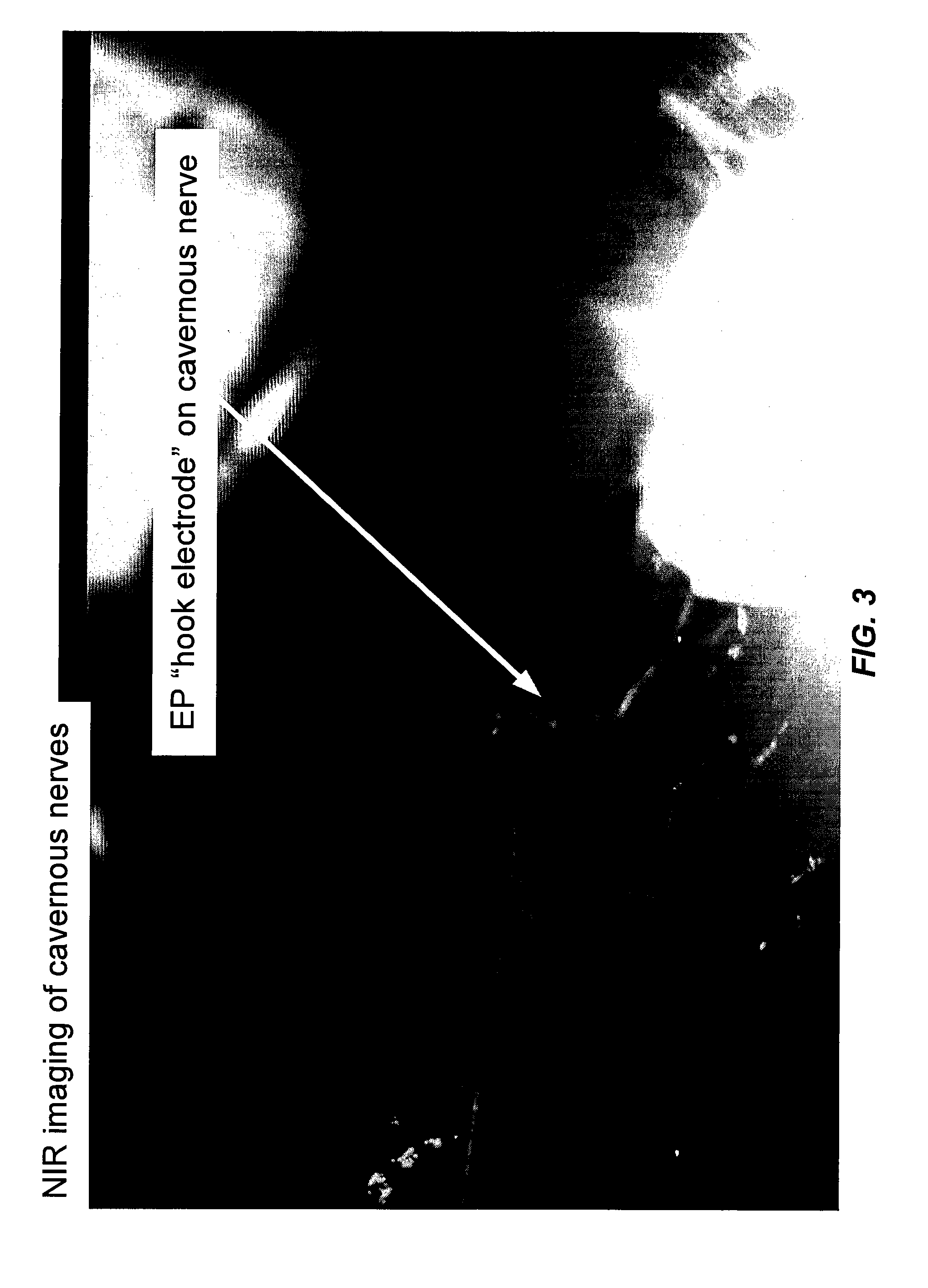Intraoperative determination of nerve location
a nerve location and intraoperative technology, applied in the field of nerve location determination, can solve the problems of difficult nerve sparing surgery, many continue to have intermittent dribbling, and achieve the effect of successful nerve sparing surgery, which is often difficult to achiev
- Summary
- Abstract
- Description
- Claims
- Application Information
AI Technical Summary
Benefits of technology
Problems solved by technology
Method used
Image
Examples
example 1
[0048] Intraoperative video angiography is performed with a laser-fluorescence imaging device (Novadaq Technologies, Inc., Mississauga, Ontario, Canada) consisting of a near infrared (NIR) laser light source and a NIR-sensitive digital camcorder. For measurements, the unit is positioned 30 to 40 cm from the area of interest. ICG, dissolved in water, is then injected as a bolus. The NIR light emitted by the laser light source induces ICG fluorescence. The fluorescence is recorded by a digital video camera, with optical filtering to block ambient and laser light so that, when desired, only ICG fluorescence is captured. Images can be observed on screen in real time (25 images / sec). The images can be reviewed and stored on the digital video camera or transferred to a computer or to storage media.
example 2
[0049] The rat cavernous nerve model is well-recognized as a model for radical retropubic prostatectomy-associated neurogenic erectile dysfunction and has distinctive advantages over the other animal models. The rat cavernous nerves are single neural bundles that run alongside the prostate on either side. They are easily identified and are ideal neural bundles to evaluate the ability of neuro tracer to highlight pelvic nerves. Further, electrical stimulation is easily accomplished and yields reliable and reproducible results. Additionally, neurophysiological studies are feasible, and animal purchase, housing, and maintenance costs are low. The medical literature describes the successful use of Sprague-Dawley rats for the assessment of erectile dysfunction after cavernous nerve injury.
[0050] The animals are divided into three groups: Group I, placebo injection; group II intracavernous ICG injection; group III Fluorogold injection. Groups I-III are subdivided into 3 sub-groups, accor...
example 3
[0057] To determine whether crural injections of dye would also result in the ability to image the cavernous nerves, 0.22 ml lf 0.25 mg / ml of ICG was injected subalbugineally into both crura of 22 rats. The area was examined for retrograde axonal transport at different time points, using a NIRF intraoperative imaging system (SPY®, Novadaq Technologies Inc., Mississauga, Ontario, Canada) that illuminates tissues with a 805 nm laser and captures images with a camera sensitive to infrared fluorescence. Near infrared microscopy and conventional histology were used to confirm the macroscopically identified fluorescent structures.
[0058] Intracrural injection of ICG permitted identification of the nerves at 6, 8, 12, 18, 24 and 36 hours post-operatively. (These were specific time points at which examinations were made. It can be assumed that the nerves would have also fluoresced and therefore permitted identification of the nerves at times, such as 20 hours and 30 hours, between those at ...
PUM
 Login to View More
Login to View More Abstract
Description
Claims
Application Information
 Login to View More
Login to View More - R&D
- Intellectual Property
- Life Sciences
- Materials
- Tech Scout
- Unparalleled Data Quality
- Higher Quality Content
- 60% Fewer Hallucinations
Browse by: Latest US Patents, China's latest patents, Technical Efficacy Thesaurus, Application Domain, Technology Topic, Popular Technical Reports.
© 2025 PatSnap. All rights reserved.Legal|Privacy policy|Modern Slavery Act Transparency Statement|Sitemap|About US| Contact US: help@patsnap.com



